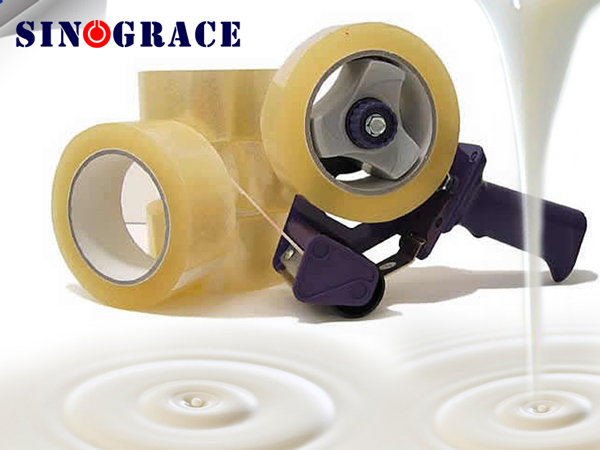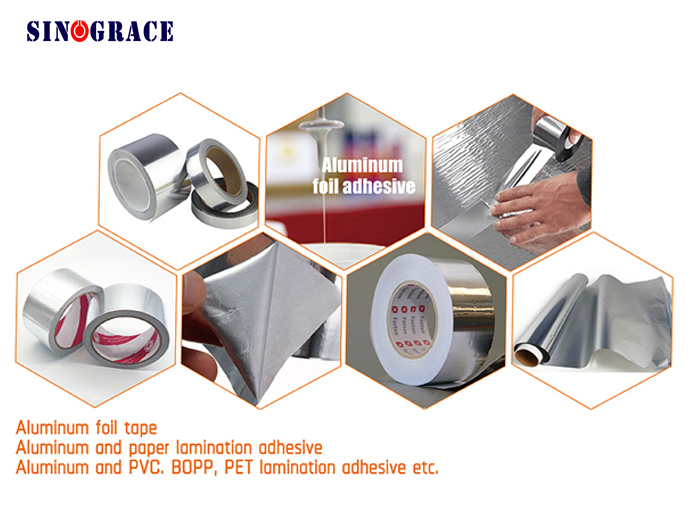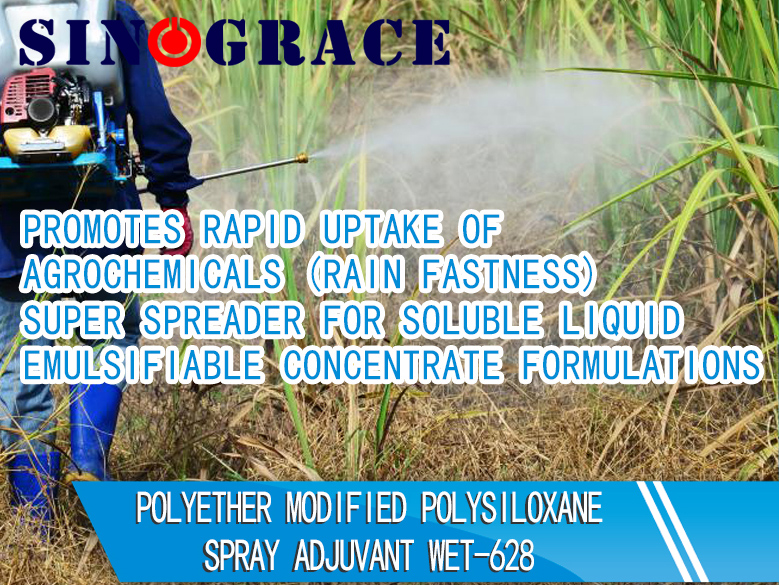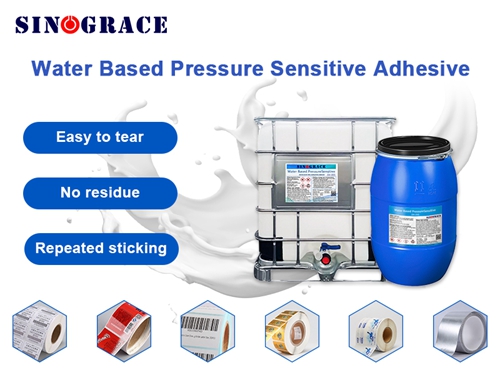
2023-08-17
Welcome to Sinograce, a leading brand in the chemical coating industry. In this SEO-optimized article, we will explore the world of BOPP lamination glue and adhesive tape glue, with a focus on Sinograce's exceptional BOPP acrylic clear adhesive. As a trusted manufacturer in the field, Sinograce offers innovative adhesive solutions that enhance the performance and durability of BOPP tapes. Throughout this article, we will address frequently asked questions (FAQs) to provide you with comprehensive insights into this specialized domain. Understanding BOPP Lamination Glue BOPP lamination glue plays a crucial role in the production of high-quality BOPP tapes. Sinograce's BOPP lamination glue is specifically formulated to provide excellent adhesion, ensuring a strong bond between the BOPP film and other substrates. This adhesive solution offers exceptional heat resistance, moisture resistance, and long-lasting durability, making it ideal for various applications. Exploring Adhesive Tape Glue Adhesive tape glue is a key component in the manufacturing process of BOPP tapes. Sinograce's adhesive tape glue is designed to deliver superior bonding strength, ensuring reliable adhesion to different surfaces. With its excellent tackiness and cohesive properties, this adhesive solution provides enhanced performance and stability, even in challenging environments. Sinograce's BOPP Acrylic Clear Adhesive Sinograce's BOPP acrylic clear adhesive stands out as a premium choice for BOPP tape applications. This adhesive offers exceptional clarity, allowing the tape's design or printed content to remain visible. Its high initial tack and peel strength ensure secure bonding, while its resistance to aging and yellowing guarantees long-term performance. Sinograce's BOPP acrylic clear adhesive is a reliable solution for industries such as packaging, labeling, and more. FAQs (Frequently Asked Questions): Q1: What makes Sinograce's BOPP acrylic clear adhesive superior? A1: Sinograce's BOPP acrylic clear adhesive stands out due to its exceptional clarity, high initial tack, peel strength, and resistance to aging and yellowing. These qualities ensure reliable and long-lasting adhesion for BOPP tapes. Q2: Can Sinograce's adhesive solutions withstand extreme temperatures? A2: Yes, Sinograce's adhesive solutions, including BOPP lamination glue and adhesive tape glue, are formulated to withstand a wide range of temperatures, ensuring optimal performance in various environments. Q3: Are Sinograce's adhesive solutions environmentally friendly? A3: Yes, Sinograce is committed to sustainability and offers environmentally friendly adhesive solutions. Our products comply with industry standards and regulations, promoting a greener and more sustainable future. Conclusion: Sinograce's expertise in the production of BOPP lamination glue, adhesive tape glue, and BOPP acrylic clear adhesive makes it a trusted partner for businesses in the chemical coating industry. With a focus on quality, du...
read more
2023-08-12
The processing method of aluminum plating film is to vaporize metal aluminum through high temperature under high vacuum, making aluminum vapor deposit on the surface of plastic film, thus forming a composite flexible packaging material. In soft plastic packaging, aluminum plating film often used is basically divided into two categories, CPP aluminum plating and PET aluminum plating, but because aluminum plating film composite is prone to aluminum plating transfer phenomenon. To many packaging enterprises bring great losses, this paper from the adhesive point of view, put forward different solutions to prevent the transfer of aluminum plating film. Two component polyurethane adhesive 1)Use special adhesive for aluminized film Ordinary adhesive solvent release is poor, the adhesive is easy to penetrate into the aluminum plating layer, affecting the fastness of the aluminum plating layer, composite if the drying effect is not good, the solvent residue is too large, the bond strength after curing will decline, and even the aluminum plating transfer phenomenon, so should choose moderate molecular weight, good solvent release, coated more uniform initial adhesion is not high aluminum plating film special adhesive. 2)The amount of glue is appropriate The amount of glue is large, which is easy to cause the drying effect of the drying channel is not good, so that the adhesive penetrates into the aluminum plating layer, and also extends the curing time, which is prone to the transfer of the aluminum plating layer. Therefore, the amount of glue should be controlled in the appropriate position, and according to experience, it is generally controlled at about 2~ 2.5g. 3)Curing agent reduction Improving the softness of the rubber layer can also effectively prevent the transfer of the aluminum plating layer, which is usually used to reduce the amount of curing agent, which can only be used in lightweight packaging and products with low stripping strength requirements, and polyester aluminum plating products should not use this method. 4) Improve the drying temperature and wind speed of the drying passage In the aluminum plating film composite processing process, the drying temperature of the drying channel should be appropriately increased, such as increasing 5-10 degrees, and ensuring that the wind speed is above 5 meters/second, making the solvent volatilize more thoroughly, reducing the solvent residue, in addition, you can also use high network cable, high concentration coating can also be used. 5)Increase the curing temperature and shorten the curing time Aluminized film composite products in the curing process should be appropriate to increase the curing temperature, shorten the curing time, so that the adhesive to reduce the penetration of the aluminized layer damage, effectively prevent the transfer of the aluminized layer, the general control temperature 50-60 degrees, the time is about 24 hours, do not cure for a long time. 6)Use good quality aluminiz...
read more
2023-08-11
wetting agent Wetting and wetting agents Wetting is usually a phenomenon in which a liquid substance has the ability to adhere to a solid and infiltrate, spread and penetrate the surface of a solid. The wettability is related to the surface tension of the solid and liquid, the smaller the surface tension of the liquid, the greater the surface tension of the solid, the better the wettability of the liquid to the solid, and the liquid can form a large distribution area on the solid surface.In the process of industrial production, many procedures are inseparable from wetting. Surfactants are the key to wetting, by adding such additives to reduce the surface tension of the liquid, and promote the liquid to better wet solid substances, this surfactant is the wetting agent. According to the object of wetting, wetting agent is mainly divided into substrate wetting agent and pigment wetting dispersant, the former focuses on the wetting of the substrate and the coated surface, for the wetting of the cloth, the latter's role is to promote the wetting and dispersion of pigments and fillers in the substrate, for the impregnation wetting. Substrate wetting agent When coating the substrate with low surface energy, the substrate wetting agent needs to be added to the coating, which can not only improve the wetting and spreading property of the coating on the substrate, enhance the smoothness of the coating surface, but also prevent the undesirable phenomena such as shrinkage hole and shrinkage edge caused by the low surface tension of the substrate, and improve the adhesion of the coating film. Dispersant for pigment wetting The wetting of pigment particles is actually a surface displacement process, that is, the wetting agent molecules will remove the air displacement on the surface of the pigment filler, thereby reducing the interfacial tension between the liquid/solid, enhancing the liquid affinity of the pigment filler, in order to improve the dispersion efficiency and dispersion stability. In fact, the wetting, dispersion and stability of the pigment filler are three inseparable processes, and the prerequisite for the pigment particles to be fully dispersed and stable in the paint is to be well wetted by the liquid medium. There are two key indicators for wetting agent selection: the HLB value of the wetting agent (the hydrophilic lipophilic balance value) and the ability of the wetting agent to reduce surface tension. The key to the selection of wetting agent is to select the auxiliaries that match the HLB value of the pigment. The better the HLB value of the selected wetting agent (hydrophilic and lipophilic balance value) matches the HLB value of the dispersed pigment and filler, the better the dispersion effect. The role of wetting agent: 1.Can change the surface tension and permeability of the coating, can better wet the substrate, used to improve the adhesion of the coating. 2. It can assist in dispersing and assisting in dust prevention of fillers a...
read more
2023-08-04
Composition of adhesive Adhesives are adhesives that can bond two objects together, referred to as glue. There are different types of adhesives according to different divisions, the use of adhesives is also quite extensive, and now it has been filled in our lives, for adhesives, do you know how it is composed? How adhesives are composed: Synthetic adhesive Synthetic adhesive is composed of main agent and auxiliary agent, main agent is also called main material, base material or adhesive; Additives are curing agent, diluent, plasticizer, filler, coupling agent, initiator, thickener, antioxidant, inhibitor, stabilizer, complex agent, emulsifier, etc., according to the requirements and uses can also include flame retardant, foaming agent, defoamer, coloring agent and anti-mold agent and other components. Base resin The main agent is the main component of the adhesive, leading the adhesive bonding performance, but also an important sign to distinguish the type of adhesive. The main agent is generally composed of one or two, or even three kinds of polymers, requiring good adhesion and wettability. Substances that can be used as adhesives are: 1.Natural polymers, such as starch, cellulose, tannin, gum Arabic, sodium alginate and other plant adhesives, as well as bone glue, fish glue, blood protein glue, casein and shellac and other animal adhesives. 2.Synthetic resin, divided into thermosetting resin and thermoplastic resin two categories. Thermosetting such as epoxy, phenolic, unsaturated polyester, polyurethane, silicone, polyimide, bismaleimide, allyl resin, furan resin, amino resin, alkyd resin, etc.; Thermoplastic resins such as polyethylene, polypropylene, polyvinyl chloride, polystyrene, acrylic resin, nylon, polycarbonate, polyformaldehyde, thermoplastic polyester, polyphenylene ether, fluorine resin, polyphenylene sulfide, polysulfone, polyketone, polyphenyl ester, liquid crystal polymer, and its modified resin or polymer alloy. It is the largest type of adhesive used. 3.Rubber and elastomer. The rubber mainly includes neoprene rubber, butyl nitrile ethylene propylene rubber, fluorine rubber, polyisobutylene, polysulfide rubber, natural rubber, chloro-sulfonated polyethylene rubber, etc. Elastomers are mainly thermoplastic elastomers and polyurethane elastomers. 4.In addition, there are inorganic adhesives, such as silicate, phosphate and phospho-copper oxide. Additives In order to meet the specific physical and chemical characteristics, the various auxiliary components added are called auxilaries, such as: in order to make the main adhesive form a network or body structure, increase the cohesion strength of the adhesive layer and add curing agents (they react with the main adhesive and produce cross-linking); Adding curing accelerators or catalysts in order to accelerate curing and reduce reaction temperature; In order to improve the resistance to atmospheric aging, thermal aging, arc aging, ozone aging and other properties, add antioxidant; ...
read moreCopyright © 2015-2024 Anhui Sinograce Chemical Co., Ltd..All Rights Reserved.powered by dyyseo.com
top